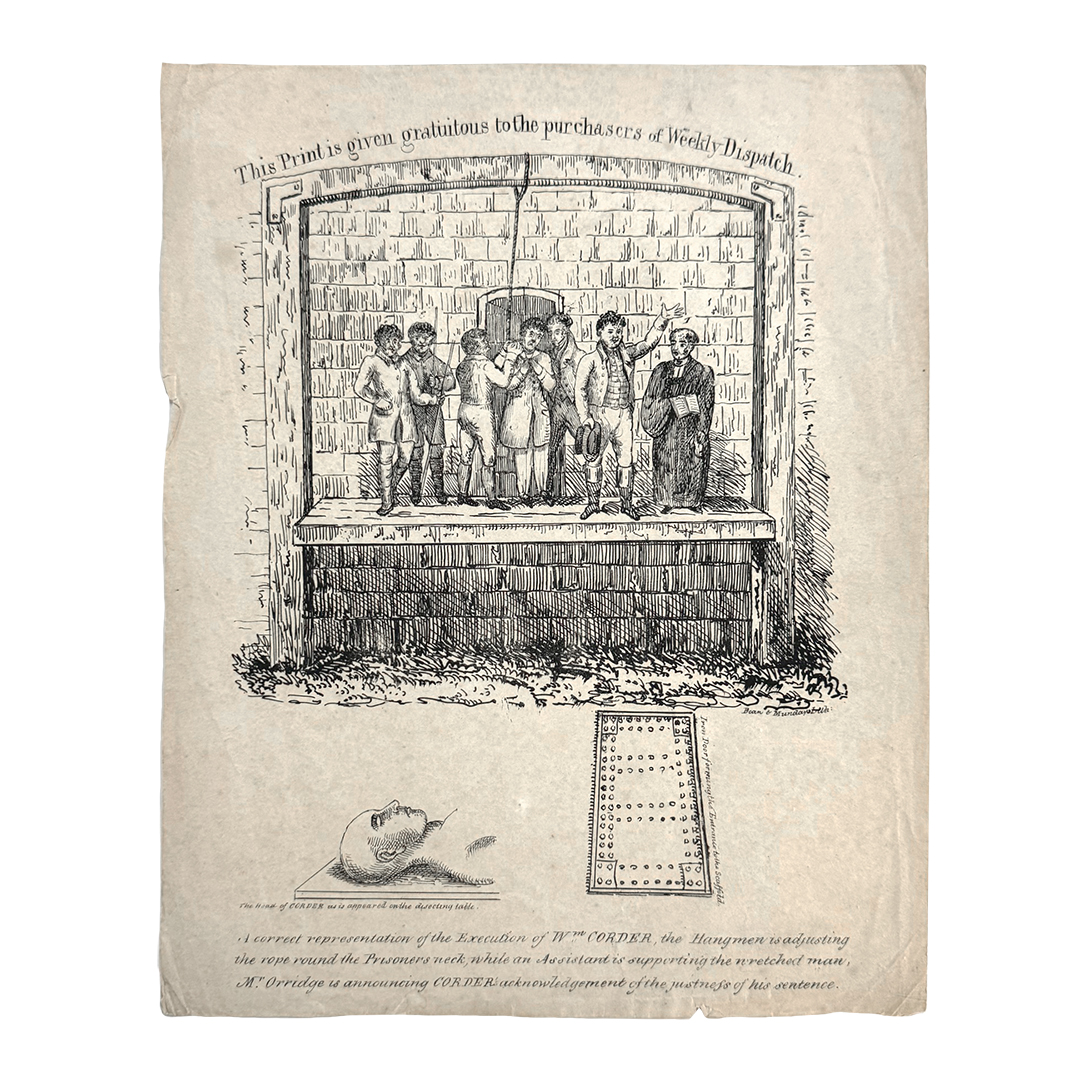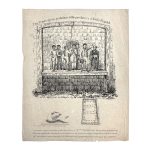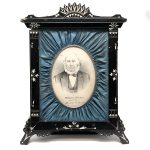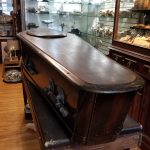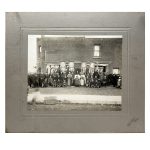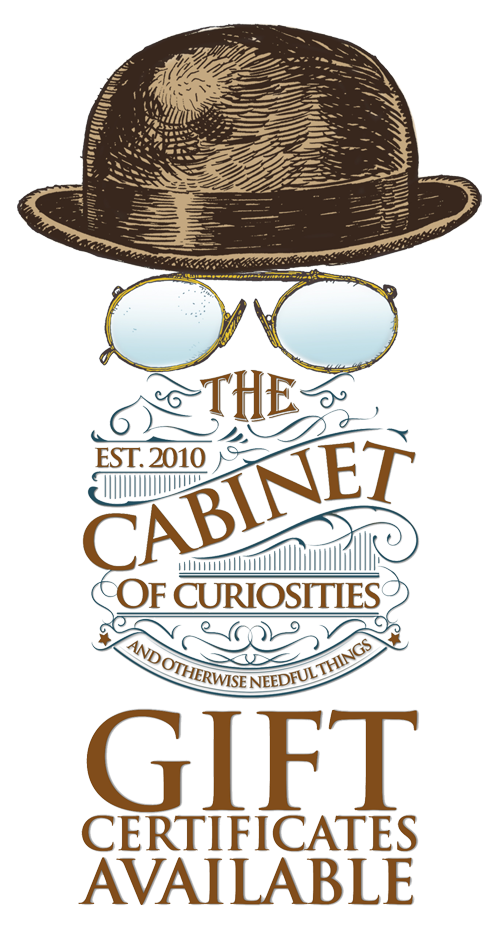Description
A rare original single sided engraving created and distributed as a premium for the newspaper Weekly Dispatch. A detailed morbid illustration of the execution of William Corder (1803-1828) convicted and sentenced to death on the gallows for the murder of Maria Marten. The case came to be known as the Red Barn Murder, the murder occurred in 1827 in Polstead, Suffolk, England. The engraving is titled ‘This Print is given gratuitous to the purchasers of Weekly Dispatch’. Additional captions include ‘ A correct representation of the execution of Wm Corder, the hangman is adjusting the rope round the Prisoners neck, while an Assistant is supporting the wretched man, Mr Orridge is announcing Corder acknowledgement of the justness of his sentence.’ An additional caption under the illustration of Corder’s body reads ‘The head of CORDER as is appeared on the dissecting table.’
The insanity of the case, from the trial, the execution, the subsequent dissection of the body and the morbid tourist trade that sprung not only from possessions but actual body parts are the stuff of legend!
9 x 11.375 inches
The murdered young woman, Maria Marten, was shot dead by her lover William Corder at the Red Barn, a local landmark. The two had arranged to meet before eloping to Ipswich. Corder sent letters to Marten’s family claiming that she was well, but after her stepmother spoke of having dreamed that Maria had been murdered, her body was discovered in the barn the next year. Corder was located in London, where he had married. He was returned to Suffolk and found guilty of murder in a well-publicised trial. In 1828, he was hanged at Bury St Edmunds in an execution witnessed by a huge crowd. The story provoked numerous newspaper articles, songs and plays. The village where the crime had taken place became a tourist attraction and the barn was stripped by souvenir hunters. Plays, ballads and songs about the murder remained popular throughout the next century and continue to be performed today.
On 11 August 1828, Corder was taken to the gallows in Bury St Edmunds, apparently too weak to stand without support. He was hanged shortly before noon in front of a large crowd; one newspaper claimed that there were 7,000 spectators, another as many as 20,000.[19] At the prompting of Orridge, just before the hood was drawn over his head, Corder said:
I am guilty; my sentence is just; I deserve my fate; and, may God have mercy on my soul.
Corder’s body was cut down after an hour by the hangman, John Foxton, who claimed his trousers and stockings according to his rights. The body was taken back to the courtroom at Shire Hall, where it was slit open along the abdomen to expose the muscles. The crowds were allowed to file past until six o’clock, when the doors were shut. According to the Norwich and Bury Post, over 5,000 people queued to see the body.
The following day, the dissection and post-mortem were carried out in front of an audience of students from Cambridge University and physicians. Reports circulated around Bury St Edmunds that a “galvanic battery” had been brought from Cambridge, and it is likely that the group experimented with galvanism on the body; a battery was attached to Corder’s limbs to demonstrate the contraction of the muscles. The sternum was opened and the internal organs examined. There was some discussion as to whether the cause of death was suffocation; it was reported that Corder’s chest was seen to rise and fall for several minutes after he had dropped, and it was thought probable that pressure on the spinal cord had killed him. The skeleton was to be reassembled after the dissection and it was not possible to examine the brain, so the surgeons contented themselves with a phrenological examination of Corder’s skull. The skull was asserted to be profoundly developed in the areas of “secretiveness, acquisitiveness, destructiveness, philoprogenitiveness, and imitativeness” with little evidence of “benevolence or veneration”. The bust of Corder held by Moyse’s Hall Museum in Bury St Edmunds is an original made by Child of Bungay as a tool for the study of Corder’s phrenology.
Several copies of Corder’s death mask were made and replicas are held at Moyse’s Hall Museum and in the dungeons of Norwich Castle. His widow advertised for sale the glasses he purportedly wore at the trial and a snuff box with Marten’s likeness. Artefacts from the trial, some of which were in Corder’s possession, are also held at the museum. Corder’s skin was tanned by surgeon George Creed and used to bind an account of the murder. This is also on display at Moyse’s Hall Museum.
Corder’s skeleton was reassembled, exhibited and used as a teaching aid in the West Suffolk Hospital. The skeleton was put on display in the Hunterian Museum in the Royal College of Surgeons of England, where it hung beside that of Jonathan Wild. In 2004, Corder’s bones were removed and cremated.

